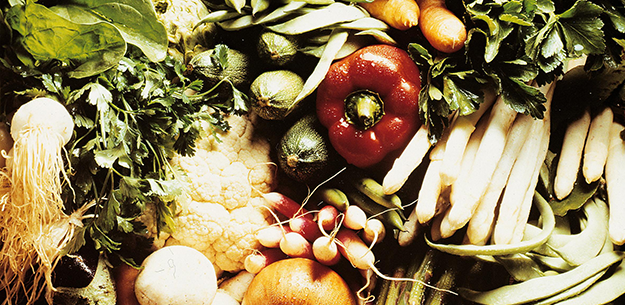.png.transform/rendition-xs/image_image%20(1).png)
Fruits & Vegetables
Widespread irrigation has enabled Spain to grow almost all known varieties of fruit and vegetables. However, tradition still plays a part in what is grown in each region. A never-ending, flavorful and healthy supply.
Vegetables
Spain’s plentiful vegetable and fruit crops traditionally supplied a wealth of products needing preservation so that they could be consumed year-round. With the invention of canning and sterilization systems in the 19th century, small-scale, family-run businesses developed, forming the backbone of what were to become large vegetable processing companies. These have now existed for decades and are mostly located in the areas where the products are grown. The leaders in this sector are the regions of Murcia and Valencia, followed by the Ebro valley or, more specifically, Navarre and La Rioja. The latter have a longstanding tradition in the production of vegetable preserves, especially asparagus, peppers and artichokes. Other regions growing and canning vegetables are Extremadura, Aragón, the two Castiles, Andalusia and Catalonia. Many tomato preserves are also produced all over Spain.
Some of the most famous Spanish vegetable preserves are the PDO Pimiento del Piquillo de Lodosa peppers from Navarre. Although virtually inedible when fresh, after roasting, hand peeling and canning, they become an outstanding delicacy with a silky texture and complex flavor – sweet, fragrant and just slightly hot.
Another well-known variety of pepper used for roasting and canning are those from Nájera (La Rioja), which are the basis for PGI Pimiento Riojano. Others are the roasted Bierzo peppers from PGI Pimiento Asado del Bierzo in León.
Another prized vegetable for canning is asparagus, and particularly those from La Rioja, Aragón and PGI Espárrago de Navarra in Navarre. Other stalk vegetables like cardoon and borage are also canned in this part of Spain. Canned artichokes are considered a delicacy, and particularly those from Tudela in Navarre which have PGI Alcachofa de Tudela status.
Fruit
Spain’s privileged location in the Mediterranean basin allows it to produce almost ten million tons of fruit annually. Approximately five to ten per cent of this is processed, mainly as preserves, making Spain one of Europe’s main producers and exporters of canned fruit.
Production mostly takes place in the region of Murcia, with peaches (the star product), mandarins, apricots and pears being the most important. Some sub-tropical fruits such as mango and papaya are also produced in canned form.
Spain’s plentiful vegetable and fruit crops, fish captures and meat elaboration methods traditionally supplied a wealth of products needing preservation so that they could be consumed year-round.
Santiago Botas/@ICEX. Edited by Adrienne Smith/@ICEX



- /content/dam/en/icex-foodswines/images/products/fruits---vegetables/Fruits%20Vegetables%20carr1.png
- /content/dam/en/icex-foodswines/images/products/fruits---vegetables/Fruits%20Vegetables%20carr2.png
- /content/dam/en/icex-foodswines/images/products/fruits---vegetables/Fruits%20Vegetables%20carr3.png

